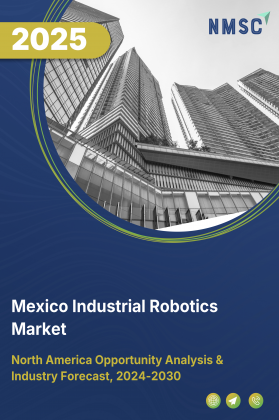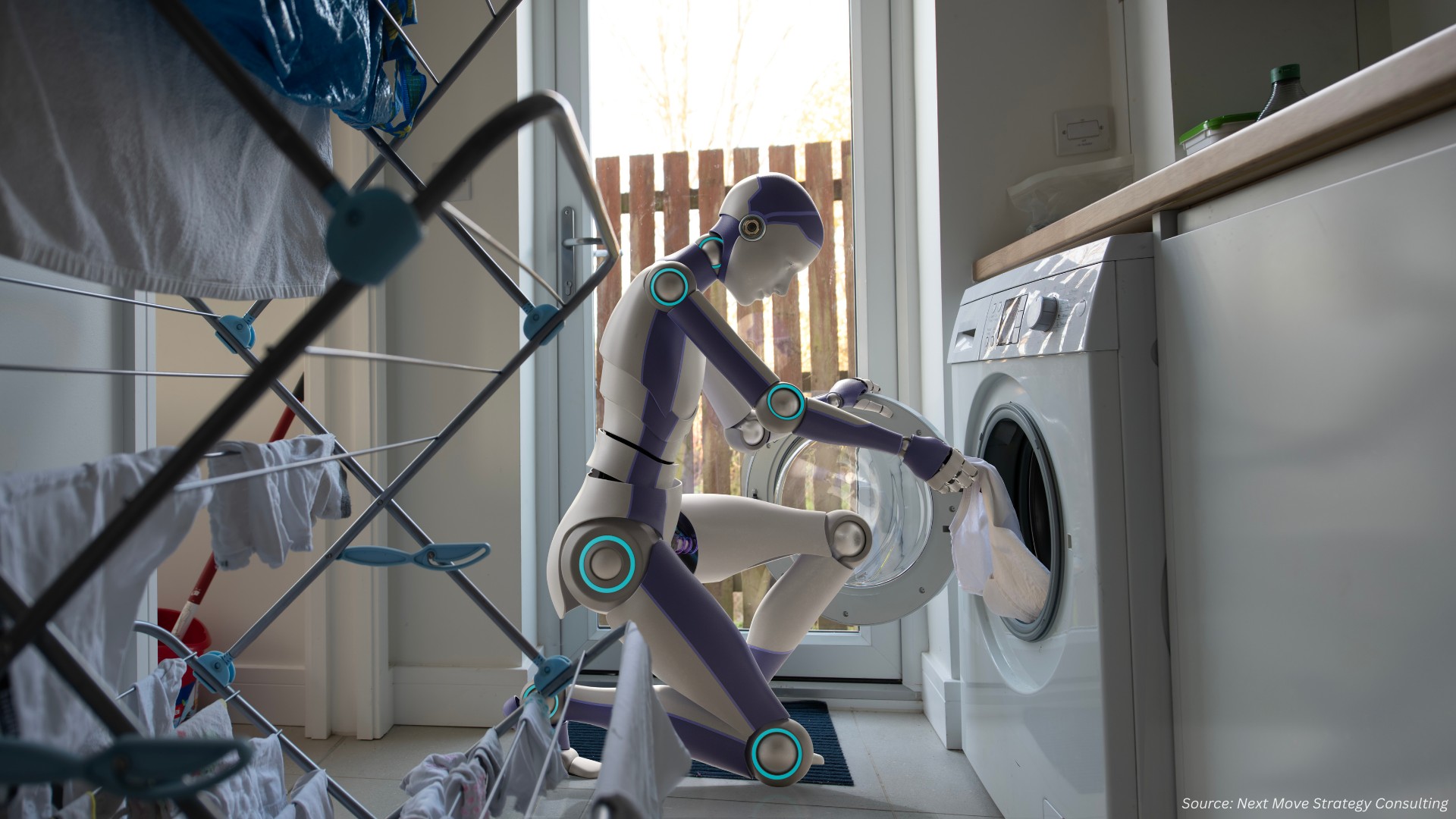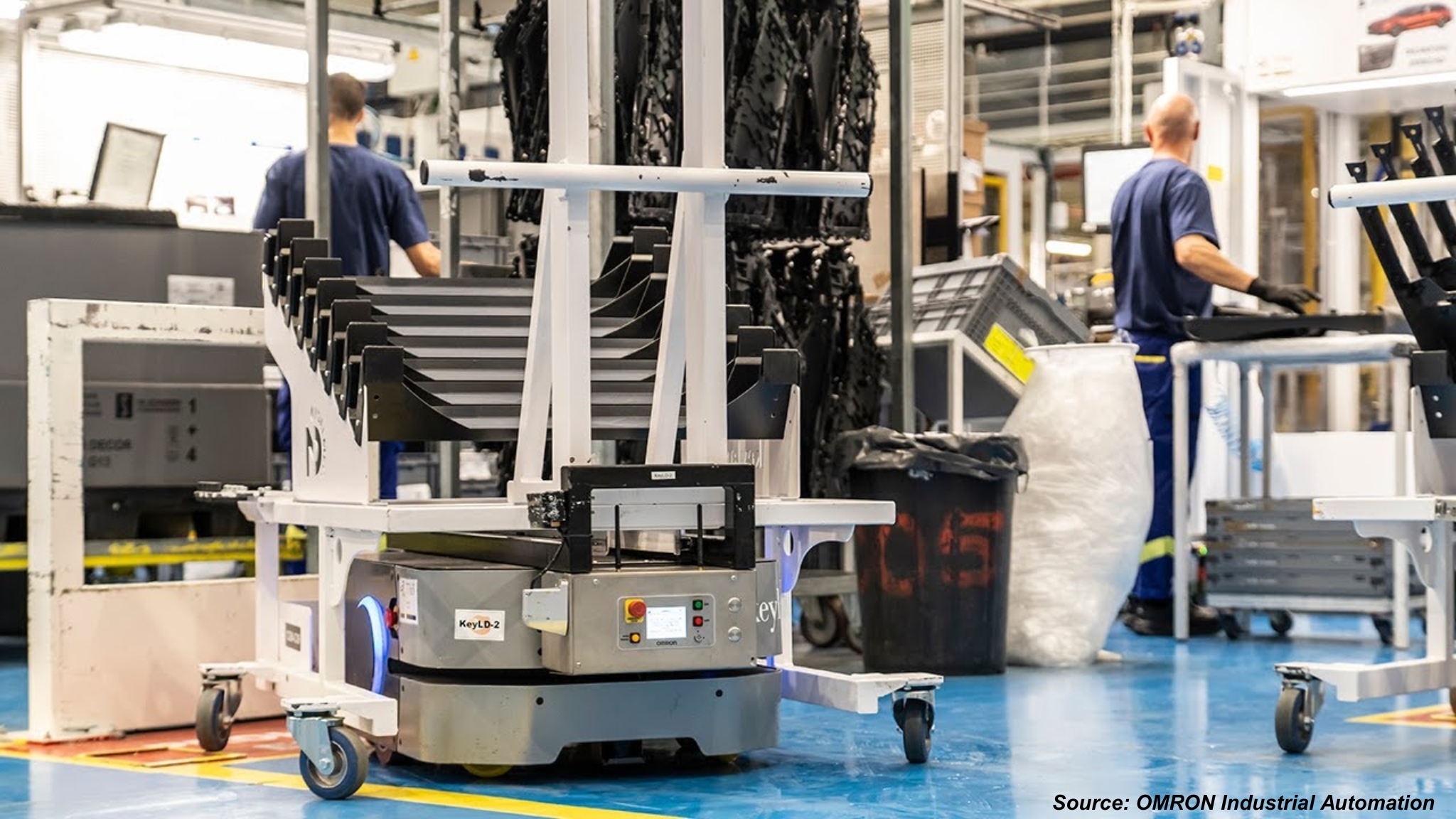
Australia Industrial Robotics Market by Type (Articulated Robots, SCARA Robots, and Others), by Offering Hardware, Software, and Services), by Payload Capacity (≤ 100 KG, 101-200 KG, 201-500 KG and Others), by Mobility (Stationary, and Mobile Robots), by Mounting Type (Floor mounted, Wall-mounted, and Others), by Application (Material Handling, Assembling & Disassembling, and Others), by Industry Vertical (Automotive, and Others) – Opportunity Analysis and Industry Forecast, 2025–2030
Industry: Semiconductor & Electronics | Publish Date: 24-Nov-2025 | No of Pages: 238 | No. of Tables: 192 | No. of Figures: 137 | Format: PDF | Report Code : SE3712
Industry Outlook
The Australia Industrial Robotics Market size was valued at USD 97.5 million in 2024 and is expected to reach USD 114.5 million by 2025. Looking ahead, the industry is projected to expand significantly, reaching USD 200.6 million by 2030, registering a CAGR of 11.9% from 2025 to 2030. In terms of volume, the market recorded 1 thousand units in 2024, with forecasts indicating growth to 1 thousand units by 2025 and further to 2 thousand units by 2030, reflecting a CAGR of 11.4% over the same period.
The industrial robotics market in Australia is experiencing strong growth driven by multiple factors, including the expansion of the mining and food processing industries, rising labor costs, and growing workforce shortages that are pushing companies toward automation to enhance productivity and safety. The integration of IoT technology is further accelerating adoption by enabling real-time monitoring, predictive maintenance, and data-driven process optimization, thereby improving efficiency and reducing downtime. However, the market faces restraints such as high implementation costs, limited ROI for SMEs, and challenges related to system integration and skill shortages, which hinder broader adoption. Despite these challenges, increasing automation across key sectors is solidifying Australia’s position as a leader in advanced and connected manufacturing.
Expansion of the Mining and Food Processing Industries is Driving Australia Industrial Robotics Market Growth
Australia’s strong mining and food processing sectors are also key drivers of factory automation systems adoption. The mining industry is leveraging robotics for exploration, drilling, and materials handling to improve efficiency and safety in remote operations. Similarly, the food and beverage industry is increasingly integrating robotic systems for packaging, palletizing, and quality inspection to meet rising consumer demand and stringent hygiene standards. These industries’ focus on automation to enhance productivity, reduce waste, and ensure operational reliability is significantly boosting the demand for industrial robots across Australia.
Increasing Labor Costs and Workforce Shortages Extend Australia Industrial Robotics Market Trends
The Australia industrial robotics market is being propelled by rising labor costs and growing workforce shortages, particularly in the manufacturing and logistics sectors. As the availability of skilled labor declines and wages increase, companies are turning to automation to maintain productivity and control operational expenses. Industrial robots are increasingly being deployed to perform tasks that are hazardous, repetitive, or require high precision, thereby improving safety and consistency. This shift toward automation helps businesses address labor market challenges while ensuring stable production output and competitiveness in both domestic and international markets.
Integration Challenges and Skill Gaps Moderating Robotics Growth in Australia
The growth of Australia industrial robotics market is being moderated by challenges related to system integration and workforce capabilities. Many manufacturers, particularly small and medium-sized enterprises (SMEs), face difficulties in integrating advanced robotic systems with existing equipment and processes. High initial investment costs, limited availability of skilled technicians, and the need for process-specific customization add further complexity. Additionally, gaps in awareness and technical knowledge about robotics solutions among some companies constrain broader adoption. These factors can slow implementation, restrict scalability, and temper the overall of Australia industrial robotics market expansion, even amid rising demand for automation and advanced manufacturing solutions.
IoT Integration Boosting Productivity and Driving Robotics Adoption in Australia
The integration of Internet of Things (IoT) technology is emerging as a major driver of the industrial robotics market in Australia. IoT-enabled robotic systems facilitate real-time data collection, predictive maintenance, and intelligent process optimization, allowing manufacturers to streamline operations, enhance equipment performance, and reduce downtime. This interconnected manufacturing environment supports data-driven decision-making, enabling companies to identify inefficiencies and implement timely interventions. By leveraging IoT connectivity, Australian manufacturers are improving production flexibility, reducing operational costs, and accelerating the adoption of advanced robotics across industries such as automotive, food processing, and mining, thereby strengthening the country’s industrial competitiveness.
Competitive Landscape
The Australia industrial robotics industry is highly competitive, featuring a mix of leading global and domestic players such as ABB Ltd., Fanuc Corporation, Yaskawa Electric Corporation, Mitsubishi Electric Corporation, Automated Solutions, Yamaha Motor Co., Ltd., Rockwell Automation, Siemens AG, Panasonic Corporation, Honeywell International Inc., Omron Corporation, Seiko Epson Corporation, Stäubli International AG, DENSO WAVE INC., and Carl Cloos Schweisstechnik GmbH. These companies are driving innovation through the development of AI- and IoT-integrated robotic systems, including collaborative robots (cobots) and autonomous mobile robots (AMRs). Their cutting-edge technologies are supporting the automation of critical processes across sectors such as mining, food processing, automotive, and manufacturing, enhancing productivity, precision, and operational flexibility within Australia’s advanced industrial landscape.
Australia Industrial Robotics Market Key Segments
By Type
-
Articulated Robots
-
SCARA Robots
-
Cylindrical Robots
-
Cartesian/Linear Robots
-
Parallel Robots
-
Collaborative Robots
-
Autonomous Mobile Robots (AMRs)
-
Automated Guided Vehicles (AGVs)
-
Other Robots
By Offering
-
Hardware
-
Software
-
Robot Control Software
-
Vision & Perception Software
-
Other Software
-
-
Services
By Payload Capacity
-
≤ 100 KG
-
101-200 KG
-
201-500 KG
-
501-1000 KG
-
1001-2000 KG
-
2001-5000KG
-
More than 5000 KG
By Mobility
-
Stationary Robots
-
Mobile Robots
-
By Mounting Type
-
Floor-mounted
-
Wall-mounted
-
Ceiling-mounted
-
Rail-mounted
By Application
-
Material Handling
-
Assembling & Disassembling
-
Processing
-
Cleanroom
-
Dispensing
-
Welding and Soldering
-
Pick and Place
-
Others
By Industry Vertical
-
Automotive
-
Semiconductor & Electronics
-
Plastic and Chemical Products
-
Metal and Machinery
-
Logistics
-
Food & Beverages
-
Healthcare & Pharmaceutical
-
Others
Key Players
-
ABB Ltd.
-
Fanuc Corporation
-
Yaskawa Electric Corporation
-
Mitsubishi Electric Corporation
-
Automated Solutions
-
Yamaha Motor Co., Ltd.
-
Rockwell Automation
-
Seimens AG
-
Panasonic Corporation
-
Honeywell International Inc
-
Omron Corporation
-
Seiko Epson Corporation
-
Staubli International AG
-
DENSO WAVE INC.
-
Carl Cloos Schweisstechnik GmbH
Report Scope and Segmentation
|
Parameters |
Details |
|
Market Size in 2025 |
USD 114.5 Million |
|
Revenue Forecast in 2030 |
USD 200.6 Million |
|
Growth Rate |
CAGR of 11.9% from 2025 to 2030 |
|
Market Volume in 2025 |
1 thousand units |
|
Volume Forecast in 2030 |
2 thousand units |
|
Growth Rate |
CAGR of 11.4% from 2025 to 2030 |
|
Analysis Period |
2024–2030 |
|
Base Year Considered |
2024 |
|
Forecast Period |
2025–2030 |
|
Market Size Estimation |
Million (USD) |
|
Growth Factors |
|
|
Companies Profiled |
15 |
|
Market Share |
Available for 10 companies |
|
Customization Scope |
Free customization (equivalent up to 2970 working hours of analysts) after purchase. Addition or alteration to country, regional, and segment scope. |
|
Pricing and Purchase Options |
Avail customized purchase options to meet your exact research needs. |

















 Speak to Our Analyst
Speak to Our Analyst

























